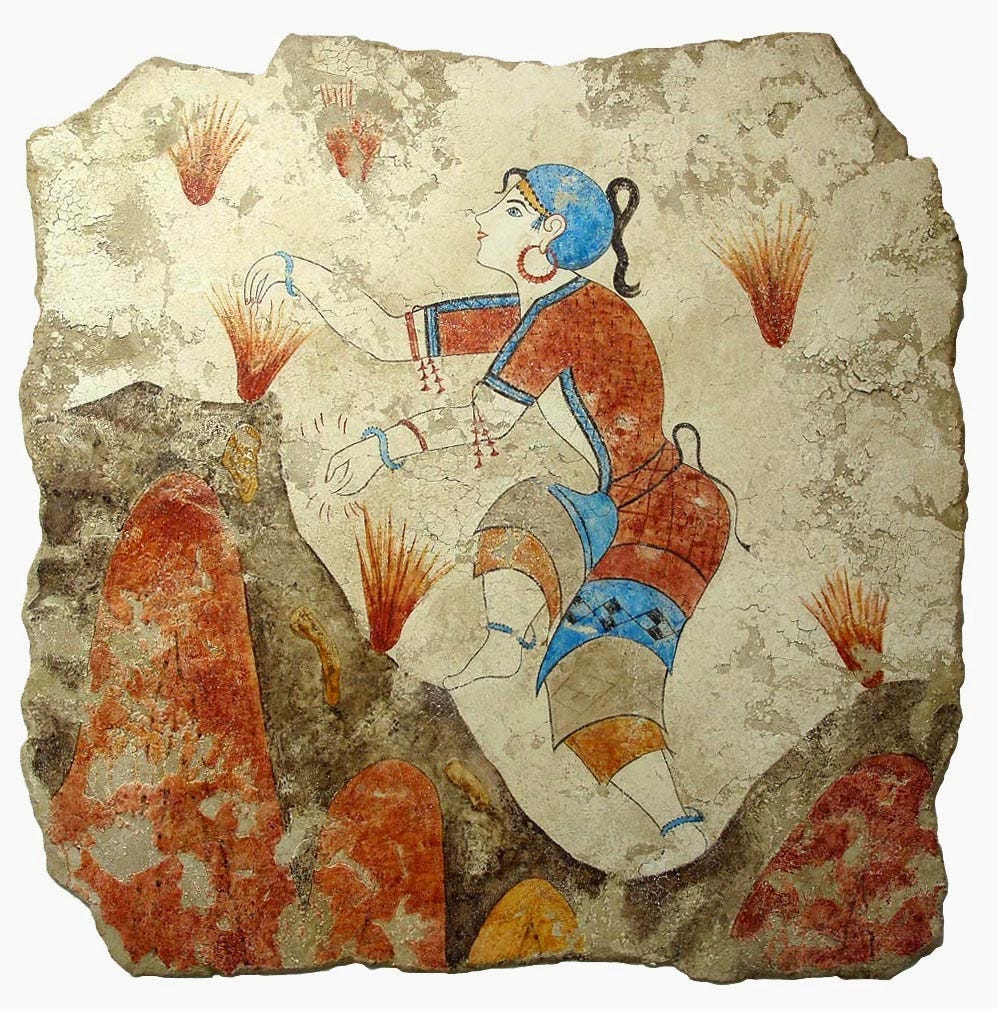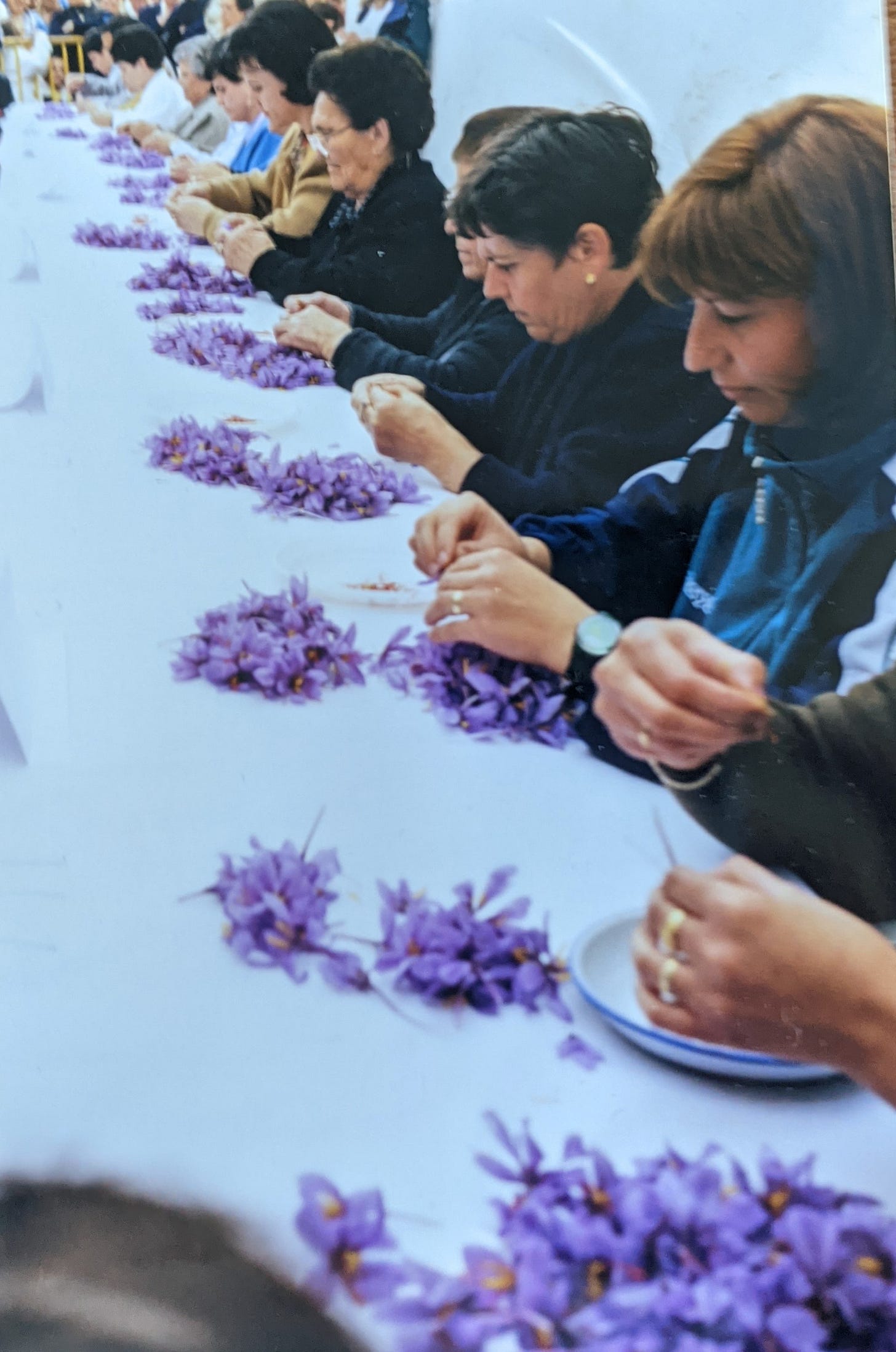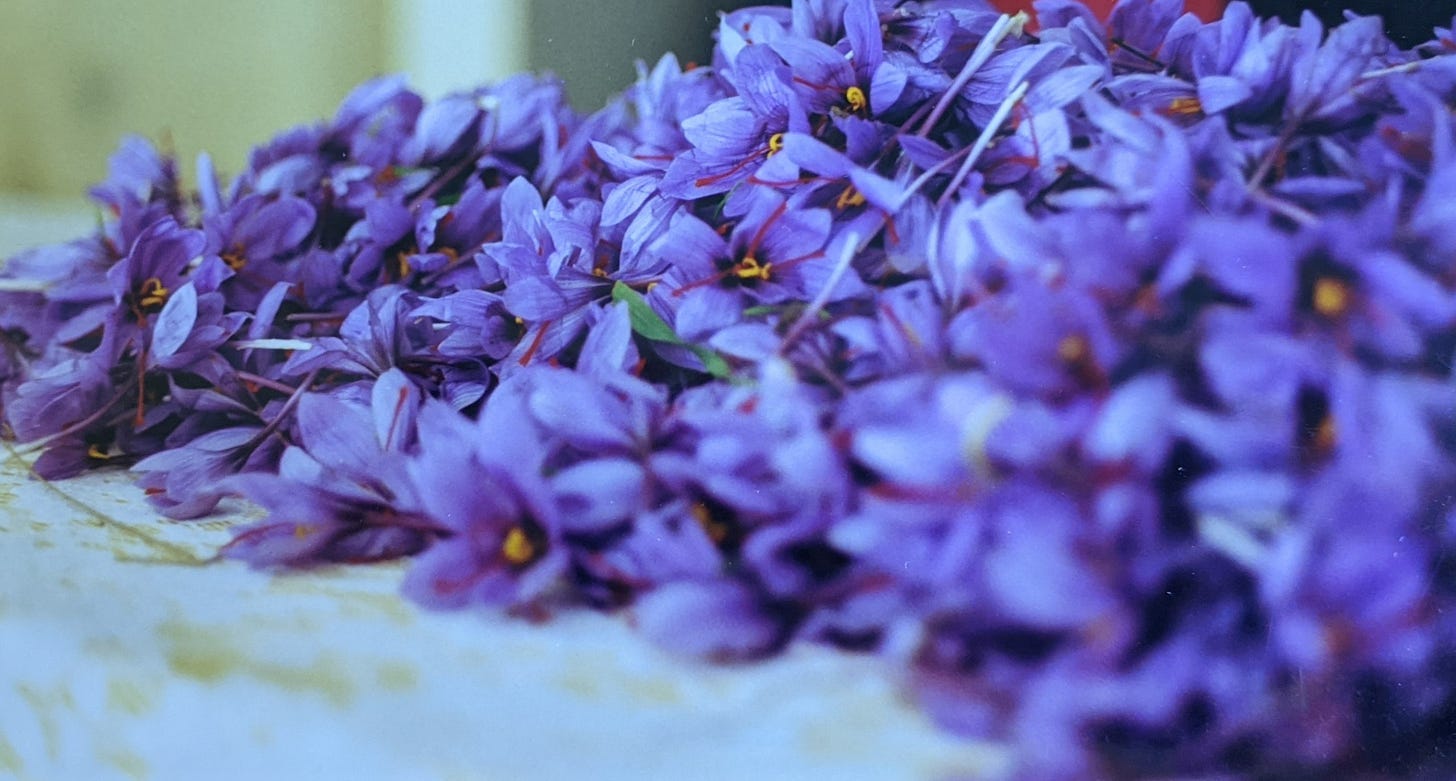The Saffron Field of Brooklyn
A puzzle solved.
I researched saffron for nearly two years, seeking to understand how such a little flower traveled from its native land, Iran, and along its way around the globe became the most expensive spice in the world. I even hauled my sister, Sue, to Consuegra, a small Spanish town that every fall during the saffron harvest hosts Fiesta de la Rosa del Azafran—a three-day pageantry of eating and drinking, ending in a highly competitive contest to see who is the fastest at gently picking out the bloom’s stigma that dries into a saffron thread. I returned and began to write a book that I couldn’t finish until I really knew the true nature of the spice. This is when I decided it might be a good idea to plant my own saffron field in my Brooklyn garden.
There are few nurseries that sell the kind of crocus bulbs that bloom in October and produce saffron. They are very expensive, too, and you need a lot—150,000 to make a pound, maybe 30,000 to end up with half a cup. The hundred I ordered set me back $80, a sum I did not reveal to my husband until the charge showed up on our bill. He was mildly miffed. I panicked, realizing I really didn’t have room for a hundred bulbs in my small garden but probably needed a hell of a lot more for a pinch or two. Marital harmony required being satisfied with what my crocus order would produce.
Gardening reality set in afterwards. Three tiny beds containing several old azaleas and rhododendron bushes ringed by a sprawling pet cemetery and shaded by a looming river birch tree left only one option: to create a raised bed under my kids’ basketball hoop in the communal driveway behind my house. For the next week or two I drove around looking for empty lots to collect enough bricks and stones to form a box, then dragged a backbreaking amount of loam, manure, and sand to fill it. The corms arrived on a June morning and were planted by sunset, six inches down, four long neat rows across, the epitome of crazy optimism.
The reward was a cooperative summer delivering some approximation of Iran’s climate: my bed roasting under long, blazing hot, arid days. Errant basketballs sometimes pounded the far edges of the rows, and once I backed the car too close and jostled loose several bricks. Still, near the end of August the first crocus shoots appeared. By the middle of September, lavender-tipped spears poked up between the thin leaves. There was a bit of stress over a few cool nights, but an Indian summer set in afterwards. September gave way to October, and autumn leaves began to brush across my little saffron plain.
Then, one morning, the sun barely cresting, the blossoms unfurled. Unless the flowers were immediately gathered, the saffron threads within them would lose their potency. I yelped, grabbed a small bowl, and ran outside to begin the harvest. Neighbors leaving for work stopped at the sight of me, bathrobe hiked up around my thighs, tearing out the flowers they had watched me cultivate for months. My family, used to odd behavior, chose to go off to school and work by the front door.
The bowl overflowed with soft petals when I finally stopped, my fingers wet with dew, sticky with pollen, lower back aching. I brought it inside, finally made breakfast and dressed, then sat at the table and tried to remember how the contestants in Consuegra pulled the petals back and separated the red stigma from the yellow stamen. Yank too hard and the stigma, the saffron thread, will break; pinch too lightly and the yellow stamen will cling to the thread and dilute the saffron taste. What appeared to be simple when watched from the sidelines took a surprising amount of hard concentration when personally involved. Attempts to mechanize the saffron harvest have failed because the work is too delicate. To this day, the manufacturing of saffron is done by hand, usually by cheap rural labor: a peasant crop that demands princely prices.
My flowers were all shredded by late afternoon with only a few breaks for hand massages, a dog walk, and a four o’clock glass of wine. My table was strewn with mangled purple petals and the little red threads—whole and partial—laid out to dry across a window screen. By the following morning, most of the threads had crinkled and shrunk.
The next day, the harvest was complete with a yield that barely filled a tablespoon. One of our neighbors, a retired chef, stopped by a few days later to see how things were going. Good, he said, enough for a fine meal. And so we formed a party beside my saffron field, his wife and my husband, and a couple of old friends we hadn’t seen in what felt like a long, long time. He carried several lobsters down the communal driveway and cooked them with saffron-infused olive oil. It was a simple meal, no more than the yellow tinged meat, a good crusty bread to sop up the oil, and bottles of pinot noir for some and cold beer for others.
We sat long into the cool autumn night, six souls sated and blessed. Here, at last, I realized the answer to the question that haunted me through all the years of seeking to understand the lure of saffron across millennia, back to ancient Iran and across the Far East, Europe, and North America, to a trip to Consuegra and a summer of coaxing a field of crocuses to flourish in Brooklyn.
It is this—what such a tiny flower has always embodied and shared with the world: so little is needed to turn life into a sumptuous feast.




